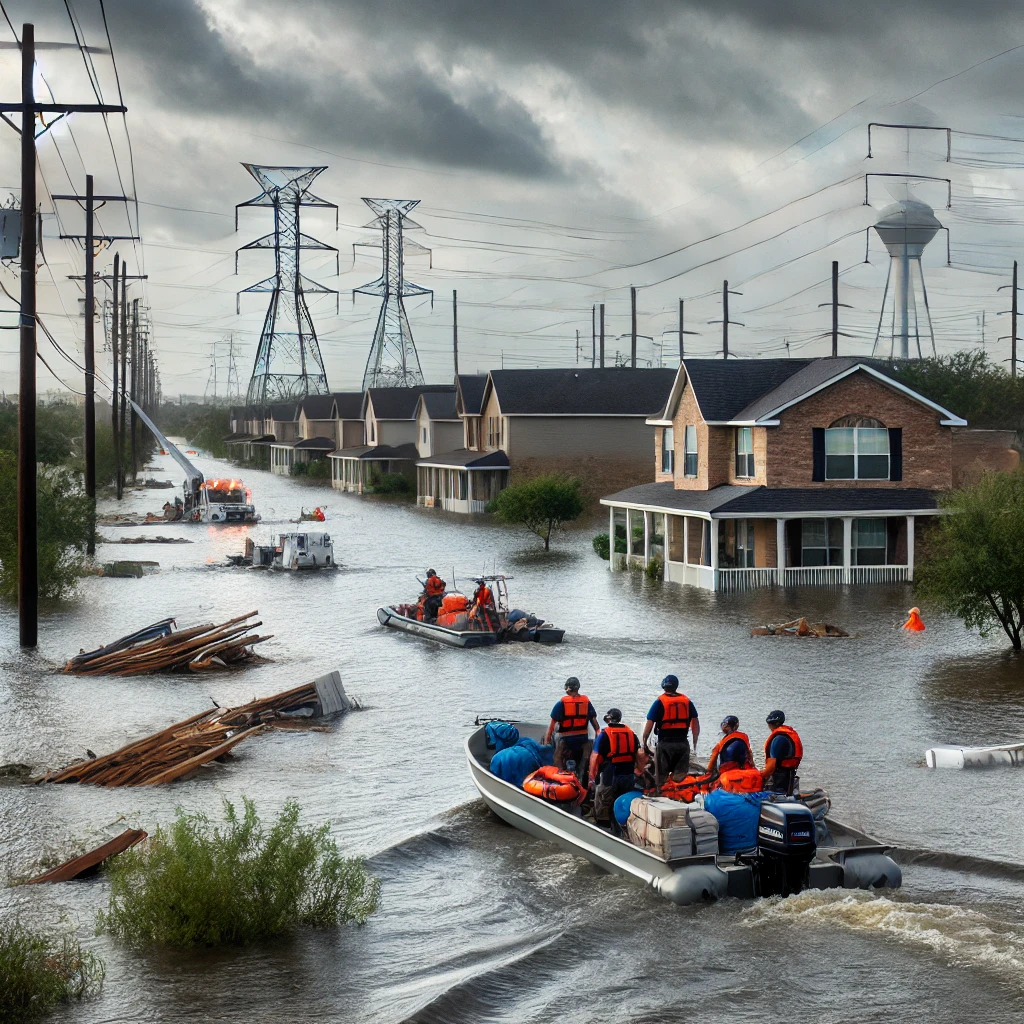Hurricane Florida, Hurricane in USA, Hurricane HELENE Florida, Hurricane Milton Live, Hurricane Milton Tracker, Path Tracker, Emergency Resources, Affected Areas, Florida hurricane recovery, Rebuilding after Hurricane Milton, Milton storm damage Florida, Hurricane Milton relief efforts, Preparing for hurricanes in Florida ,Post-hurricane survival tips, How to recover from hurricanes, Hurricane Milton 2024, Hurricane Milton News, Hurricane Milton 2024 News, Milton hurricane Florida impact, Hurricane Milton updates, Hurricane evacuation plans Florida, Florida storm damage repair.
Hurricane Milton: Florida’s Recovery Journey and Essential Preparedness Tips
Hurricane Milton, a formidable Category 4 storm, recently battered Florida with devastating winds and massive flooding, leaving many communities struggling to recover. As search and rescue operations continue, Floridians are starting to pick up the pieces. The aftermath of such a powerful storm highlights the importance of recovery efforts, long-term rebuilding, and preparing for future hurricanes.
In this comprehensive guide, we’ll take you through the impact of Hurricane Milton, Florida’s current recovery efforts, the challenges residents face, and how to prepare for future storms. By the end, you’ll have a clearer picture of the steps required to rebuild, along with essential tips to safeguard your home and family from future hurricanes.
The Destruction Caused by Hurricane Milton
When Hurricane Milton made landfall, it unleashed catastrophic winds of over 140 mph along with a significant storm surge that pushed seawater inland, flooding homes and businesses. Coastal communities, especially in Florida’s Panhandle, bore the brunt of the destruction.
Hardest-Hit Areas:
- Panama City: One of the most affected cities, where homes were either destroyed or severely damaged. The strong winds downed power lines and caused widespread structural damage.
- Pensacola: The storm surge flooded the low-lying areas of Pensacola, leaving roads impassable and homes under several feet of water.
- Inland Regions: The damage wasn’t limited to coastal areas. Inland cities experienced heavy rains and flash flooding, causing rivers to overflow and cut off access to some neighborhoods.
Hurricane Milton’s damage is reminiscent of previous storms like Hurricane Michael in 2018, which similarly ravaged the Panhandle region. But every hurricane has its unique footprint. Milton’s combination of heavy rainfall and strong winds made it one of the most dangerous hurricanes to hit the U.S. in recent years.

Recovery Efforts in the Wake of Hurricane Milton
As Floridians start the long road to recovery, local and federal agencies have mobilized to assist in various ways. However, the process of rebuilding and restoring essential services takes time, and many residents are still without basic necessities.
Search and Rescue Operations
Immediately following the storm, emergency responders from local fire departments, the National Guard, and FEMA began conducting search and rescue missions. They are working to reach people trapped in their homes due to flooding or collapsed structures. In remote areas, access is still challenging as many roads are blocked by debris.
Power Restoration
More than half a million homes lost power after Milton made landfall. Utility crews from neighboring states have been brought in to help restore electricity, but the damage to the electrical grid is extensive. In some places, it could take weeks for power to be fully restored, especially in hard-to-reach areas where utility lines were destroyed by falling trees or storm surges.
In the meantime, local officials are urging residents to be cautious when using portable generators, which can be dangerous if not operated properly. Many people rely on these generators for temporary power, but improper use can lead to carbon monoxide poisoning or fires.
Debris Removal and Clean-Up
Clearing debris is a major priority in the recovery process. Downed trees, power lines, and damaged buildings are being removed to reopen roads and ensure emergency responders have full access to the hardest-hit areas. Contractors with heavy equipment have been brought in, but the process is slow due to the scale of the destruction.
Temporary Shelters and Housing
Thousands of Floridians have been displaced from their homes, and temporary shelters have been set up to provide food, water, and a safe place to sleep. Organizations like the American Red Cross are leading efforts to support these residents, while FEMA is working on establishing temporary housing solutions for those whose homes are beyond repair.

Challenges Facing Florida in Recovery
While immediate efforts are underway to assist those affected by Hurricane Milton, the state faces several challenges in both the short and long term.
Infrastructure Rebuilding
One of the biggest obstacles is the damage to critical infrastructure, including roads, bridges, and public utilities. In some areas, roads have been washed out or covered in debris, preventing access to affected neighborhoods. Public utilities like water and sewage systems have also been severely compromised, posing health risks to residents.
Rebuilding infrastructure will take months, if not years, and it will require significant investment from both local and federal sources. In addition to repairing damaged structures, experts are urging the state to consider upgrading infrastructure to make it more resilient to future storms.
Environmental Impact
Hurricanes like Milton don’t just affect people—they also leave lasting scars on the environment. One of the major concerns following the storm is coastal erosion. The storm surge washed away beaches, which serve as natural barriers against future storms. Rebuilding these beaches will be essential to protecting coastal communities in the long term.
Wetlands and other natural habitats were also impacted. These ecosystems are home to a variety of wildlife, and the storm displaced many species, disrupting the local environment. Conservation efforts will be needed to restore these habitats and ensure that local wildlife can return.
Insurance and Financial Recovery
Another challenge facing Floridians is dealing with insurance claims and the financial toll of the storm.
Insurance Shortfalls
While most homeowners carry insurance, many residents find that their policies don’t fully cover hurricane damage, especially when it comes to flooding. Standard homeowner’s insurance typically covers wind damage but does not include flood damage, which must be purchased separately through a flood insurance policy.
As a result, some homeowners are discovering that they are responsible for significant out-of-pocket costs to repair their homes. This situation highlights the importance of having comprehensive insurance coverage, particularly in hurricane-prone regions like Florida.
Rising Insurance Costs
In the wake of Hurricane Milton, experts predict that insurance premiums for residents in affected areas will rise sharply. The increasing frequency and intensity of storms in recent years have made Florida a more expensive state to insure, and homeowners can expect to pay higher rates in the future.
Preparing for the Next Hurricane
As the recovery from Hurricane Milton continues, Floridians are reminded of the importance of being prepared for future storms. While hurricanes are unpredictable, there are steps residents can take to protect themselves and their property.
Update Your Insurance Policy
One of the first things homeowners should do is review their insurance policies to ensure they have adequate coverage. If you don’t already have flood insurance, it’s a good idea to add it to your policy, especially if you live in a flood-prone area. Wind damage is often covered by standard policies, but flood damage requires separate coverage.
Build an Emergency Kit
Having an emergency kit ready before hurricane season is crucial. Your kit should include enough supplies to last at least three days, including:
- Non-perishable food
- Bottled water
- Flashlights and batteries
- A first-aid kit
- Important documents in a waterproof container
- Medications and personal hygiene items
Make sure your kit is easily accessible, and check it regularly to ensure all items are up to date.
Create an Evacuation Plan
Knowing how to evacuate safely is another key part of hurricane preparedness. Make sure your family knows your designated evacuation route and has a plan for staying in touch if you get separated. It’s also important to know where your nearest emergency shelter is located in case you need to evacuate quickly.
Secure Your Home
Before a storm hits, take steps to secure your property. This includes:
- Installing storm shutters or boarding up windows
- Securing outdoor furniture and loose objects
- Trimming trees to prevent branches from falling on your home
- Reinforcing doors and garage doors to withstand strong winds
Conclusion: The Path Forward After Hurricane Milton
Recovering from a powerful storm like Hurricane Milton is a long and difficult process, but with the right resources and planning, Florida can rebuild stronger than ever. By staying informed, updating insurance coverage, and taking preventive measures, residents can be better prepared for future hurricanes. Let Hurricane Milton serve as a reminder that preparation is key to weathering any storm.
YOU CAN ALSO CHOOSE WHAT YOU WANT TO VIEW IN OUR WORLD:
NOBLE PRIZE WINNER 2024 OF USA IN MEDICINE
WHAT BLACK VOTERS SAY ABOUT KAMALA HARRIS AND TRUMP AND WHY ELON MUSK IS PAYING VOTERS OF USA
HURRICANE MILTON A SERIOUS THREAT TO AMERICA AND FLORIDA
Frequently Asked Questions About Hurricane Milton and Recovery:
1. How does Hurricane Milton compare to past storms?
Hurricane Milton was a Category 4 storm, similar to Hurricane Michael in 2018, which also caused widespread devastation in the Florida Panhandle. The combination of strong winds and heavy flooding made Milton one of the most dangerous hurricanes to hit the U.S. in recent years.
2. Will insurance cover all the damage from Milton?
It depends on your insurance policy. Most homeowner’s insurance policies cover wind damage, but flood damage requires a separate policy. Many homeowners without flood insurance will be responsible for out-of-pocket repairs.
3. How long will it take to restore power?
In some areas, power could be restored within a few days, but in heavily affected regions, it may take weeks to fully restore electricity. Utility companies are working as quickly as possible, but the extent of the damage has made repairs challenging.
4. What should I do if my home is uninhabitable?
If your home is uninhabitable due to damage, contact FEMA for assistance. They can provide temporary housing and financial aid to help with repairs. Additionally, local charities and organizations like the Red Cross are offering support for displaced families.
5. How can I better prepare for future hurricanes?
Ensure that your insurance policy covers both wind and flood damage, build an emergency kit with essential supplies, and create an evacuation plan. Taking steps to secure your home, such as installing storm shutters and reinforcing doors, will also help minimize damage during a storm.

10 thoughts on “Hurricane Milton 2024: The Long Road to Florida’s Recovery and How You Can Help”